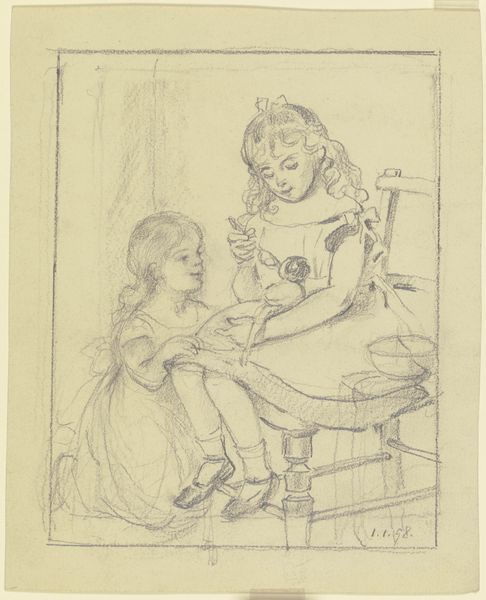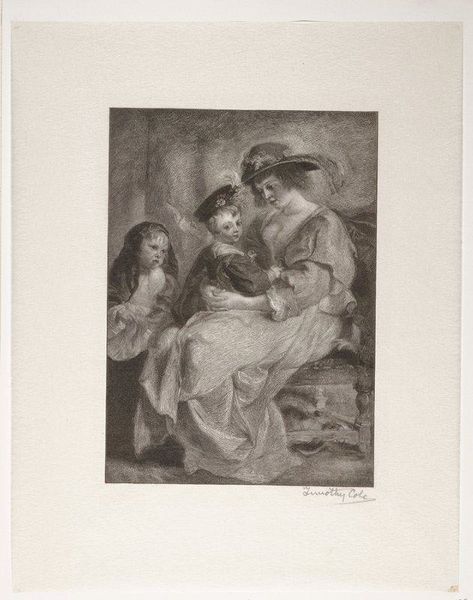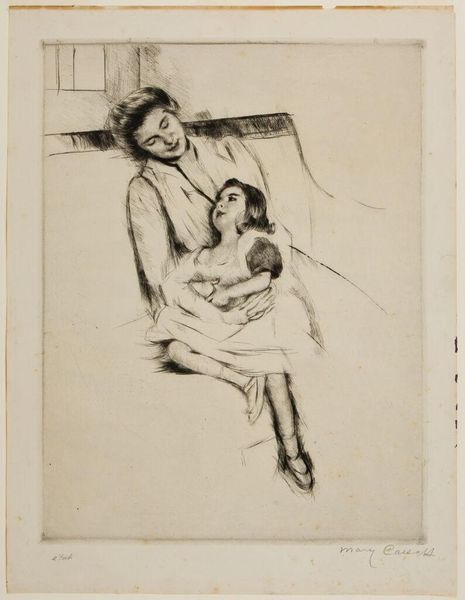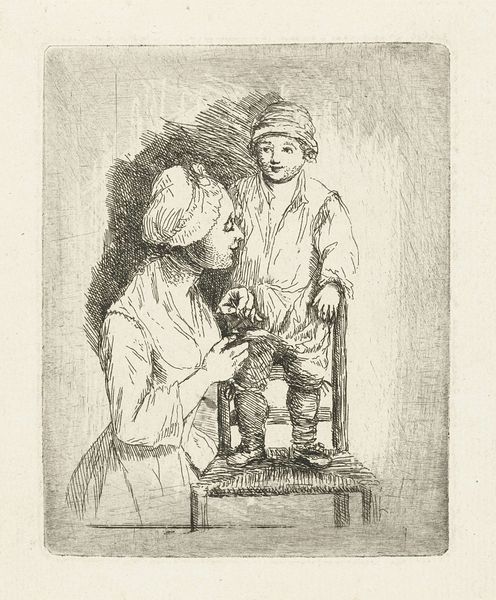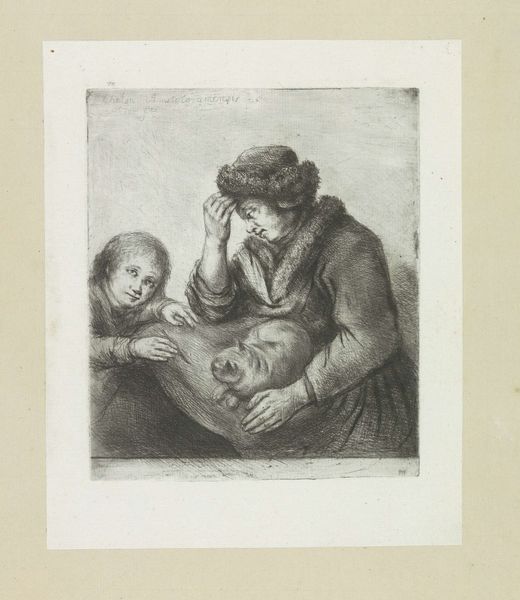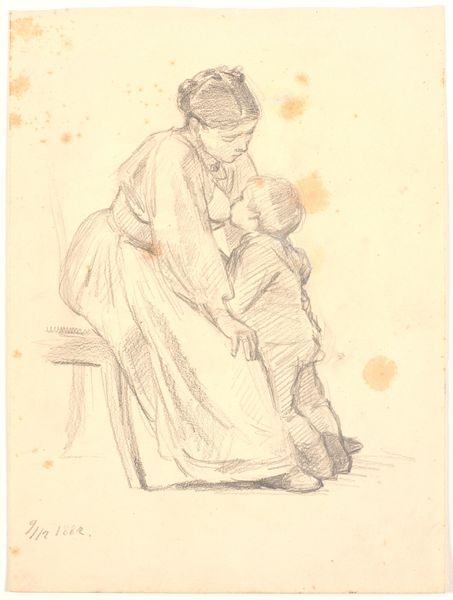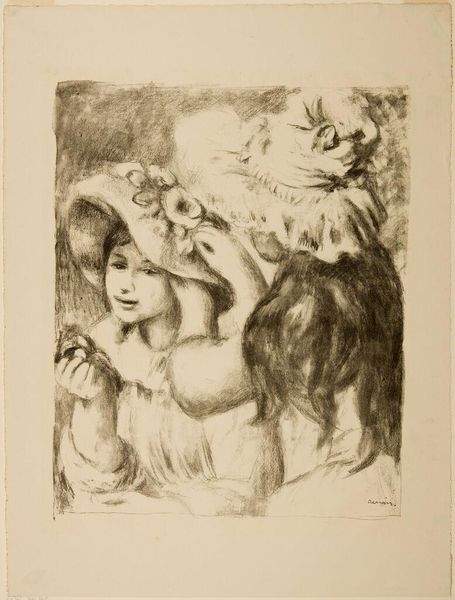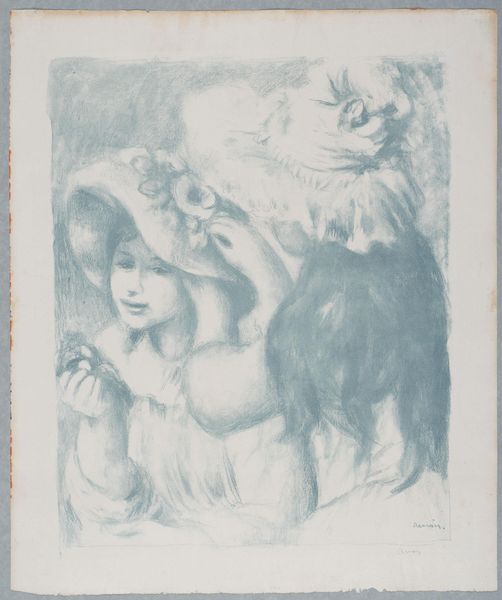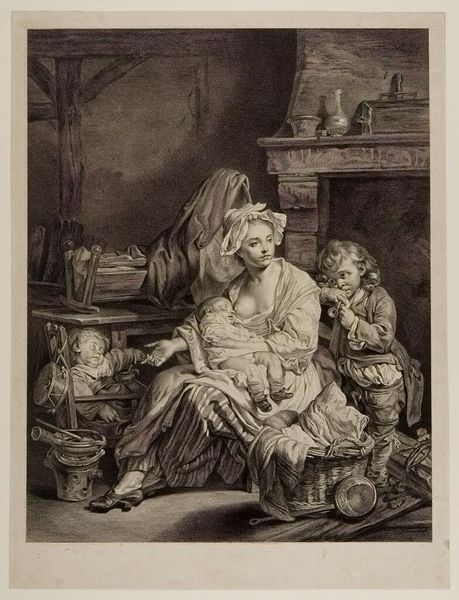
drawing, paper, pencil
#
portrait
#
pencil drawn
#
drawing
#
pencil sketch
#
charcoal drawing
#
figuration
#
paper
#
pencil drawing
#
sketch
#
pencil
#
portrait drawing
#
pencil work
#
genre-painting
Copyright: Public domain
Editor: This is "On the Potty," a drawing by Charles Maurin, rendered in pencil on paper. There’s something very intimate and tender about it. How can we interpret it through a historical lens? Curator: This drawing, with its delicate lines, reveals a fascinating perspective on late 19th-century domestic life. Consider the rising influence of hygiene and domesticity on public perception during this era. We see the act of potty training depicted not as a chore, but a subject worthy of artistic rendering. Does this normalize or aestheticize such a personal moment? Editor: It seems to soften what might have been considered taboo. Do you think it speaks to a shift in societal attitudes towards children? Curator: Precisely! There's a growing sentimentalization of childhood evident in art and literature, influencing domestic practices and parental roles. The composition suggests an increased awareness of child psychology – observe the mother’s gentle embrace and gaze. The act of depiction contributes to its cultural value, influencing behavior and perceptions around hygiene and the 'ideal' family. Editor: It's interesting how something as simple as a drawing could be seen as participating in these larger social changes. So, it’s not just a mother and child, but a statement about the values of that time? Curator: Exactly. Think of how the burgeoning industry of illustrated books and magazines also shaped public perception. Artists like Maurin contributed to a visual culture that instructed and reinforced societal norms regarding domesticity, childhood, and family roles. Considering that, does your view of its initial “tenderness” change? Editor: It does, it adds layers of social meaning to that tenderness! I'll never look at these scenes the same way again. Thanks. Curator: And thank you. It's important to remember that art rarely exists in a vacuum.
Comments
No comments
Be the first to comment and join the conversation on the ultimate creative platform.
